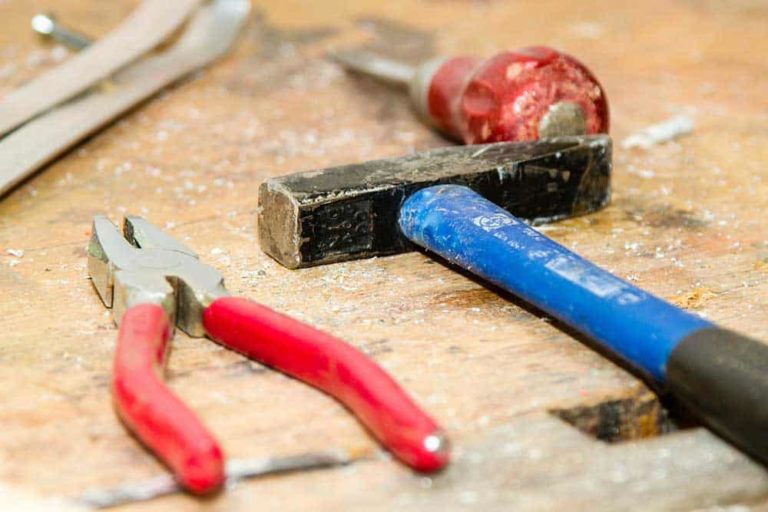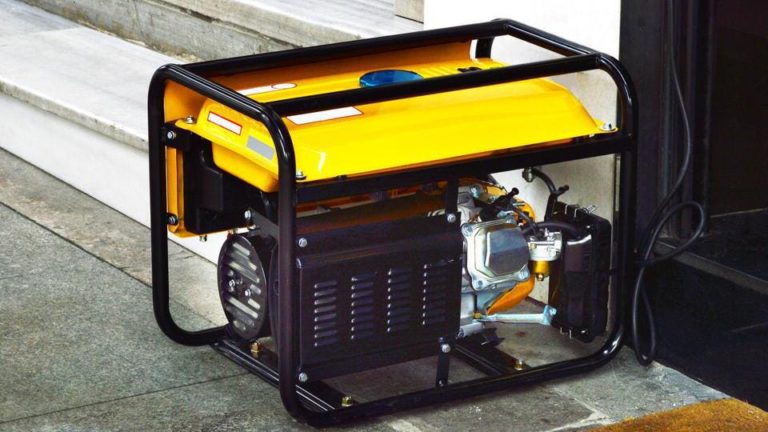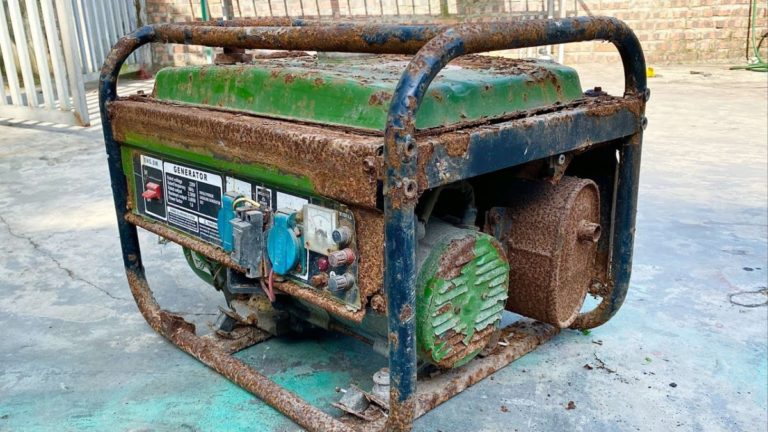Are you looking to power your off-grid tiny home or cabin with renewable energy?
Look no further than our comprehensive guide to building your own DIY solar panel and battery setup!
With the right materials and tools, you can harness the power of the sun and store it in a reliable battery bank, providing all the electricity you need for lighting, cooking, heating, and more.
We’ll take you through every step of the process, from selecting the appropriate solar panels and batteries to wiring and installing them safely and efficiently.
Plus, we’ll share tips on how to optimize your system for maximum energy production and cost-effectiveness.
Get ready to take control of your energy future with this empowering DIY project!
Determine your power needs
Calculate your power consumption to determine the size of the solar panel and battery setup you need. Consider factors such as lighting, appliances, and heating/cooling systems.
To accurately calculate your power consumption, consider the following factors
* Lighting: Replace incandescent bulbs with LEDs to minimize power usage.
Consider the number and type of lights you need, as well as the duration of use.
* Appliances: Account for all the appliances you plan to use, including refrigerators, stoves, and laptops.
Note the wattage rating of each appliance and estimate how long you’ll use them each day.
* Heating/cooling systems: If you use a heat pump or air conditioner, factor in their power consumption.
These systems can account for a significant portion of your overall energy needs.
To accurately calculate your power needs, create a list of all the appliances and lighting you’ll be using, and their corresponding wattage ratings.
Multiply the wattage by the estimated usage time to determine the daily energy usage for each item.
Then, total these values to determine your daily power needs.
This will help you determine the appropriate size of your solar panel and battery setup to ensure you have enough power to meet your needs.
Choose the right solar panel
Select a solar panel that can provide enough power to meet your needs. Monocrystalline or polycrystalline panels are good options. Consider the size, weight, and durability of the panel, as well as its warranty and price.
When selecting the right solar panel for your needs, it’s important to consider several factors to ensure you get the most appropriate and effective option.
Choose a solar panel that can provide enough power to meet your needs.
Monocrystalline or polycrystalline panels are good options as they are both high-efficiency and long-lasting.
In addition to the type of panel, consider the size, weight, and durability of the panel.
A larger panel may provide more power, but it may also be heavier and more difficult to install.
A more compact panel may be lighter and easier to install, but it may not provide as much power.
Furthermore, consider the warranty offered by the manufacturer and the price of the panel.
A longer warranty and a reasonable price can provide peace of mind and ensure a good value for your investment.
It’s essential to choose a solar panel that fits your specific needs and goals.
Consider your energy requirements, the amount of sunlight your location receives, and the space you have available for installation.
By considering these factors, you can select the right solar panel for your needs and enjoy a reliable and efficient renewable energy solution.
Select a deep cycle battery
Deep cycle batteries are designed to provide a steady amount of power over a long period. Choose a battery that has a high ampere-hour (Ah) rating and a deep discharge cycle life.
When selecting a deep cycle battery for your off-grid solar system, it’s essential to choose a battery that can provide a steady amount of power over a long period.
Deep cycle batteries are specifically designed to withstand the rigors of deep discharge cycles, which is essential for off-grid systems that rely on solar energy.
When evaluating deep cycle batteries, look for a high ampere-hour (Ah) rating and a deep discharge cycle life.
A high Ah rating indicates that the battery can provide a larger amount of power over a longer period, which is ideal for off-grid systems that require a steady supply of energy.
Look for batteries with an Ah rating of at least 1200, which will provide enough power to run your appliances and lights for several days without recharging.
Deep discharge cycle life is also important, as it determines how long the battery can provide power before it needs to be recharged.
Look for batteries with a deep discharge cycle life of at least 500 cycles, which will provide several years of reliable service.
In addition to Ah rating and deep discharge cycle life, also consider the battery’s temperature tolerance, maintenance requirements, and warranty.
A battery that can handle high temperatures, requires minimal maintenance, and has a comprehensive warranty will provide peace of mind and ensure that your off-grid solar system runs smoothly for years to come.
Choose a charge controller
A charge controller is needed to regulate the flow of power from the solar panel to the battery. Select a controller that can handle the voltage and current of your solar panel and battery setup.
When selecting a charge controller for your solar-powered battery system, it is essential to choose a controller that can handle the voltage and current of your solar panel and battery setup.
The charge controller acts as the brain of the system, regulating the flow of power from the solar panel to the battery.
A high-quality charge controller can ensure that your battery is charged efficiently and safely, maximizing its lifespan and performance.
When choosing a charge controller, consider the voltage and current ratings of your solar panel and battery.
Look for a controller that can handle the peak voltage and current output of your solar panel, and can accommodate the capacities of your battery.
For example, if your solar panel has a peak voltage of 24V and a current rating of 10A, you’ll need a charge controller that can handle at least 24V and 10A.
Ensure that the charge controller is compatible with your battery type.
Some charge controllers are designed for lead-acid batteries, while others are better suited for lithium-ion batteries.
Make sure to select a controller that is compatible with your specific battery chemistry.
In addition to voltage and current ratings, consider the charge termination voltage and the maximum current rating of the charge controller.
The charge termination voltage is the voltage at which the charge controller will stop charging the battery, and the maximum current rating determines the maximum amount of current the controller can handle.
Look for a charge controller with built-in safety features such as overcharge protection, over-discharge protection, and short-circuit protection.
These features will help prevent damage to your solar panel, battery, and charge controller, ensuring the longevity of your system.
By carefully considering these factors, you can select a high-quality charge controller that will efficiently and safely charge your solar-powered battery.
Install the solar panel
Install the solar panel in a location that receives adequate sunlight. Make sure the panel is securely attached to the roof or ground mount, and that all connections are secure and watertight.
To install the solar panel, first select a location that receives adequate sunlight.
This is important for maximizing energy production and ensuring a positive return on investment.
Ideally, the solar panel should face south or west to maximize exposure to sunlight throughout the day.
Next, ensure the panel is securely attached to the roof or ground mount using durable and corrosion-resistant brackets.
This will prevent the panel from shifting or detaching during extreme weather conditions, such as high winds or heavy snowfall.
Double-check all connections between the solar panel and other system components, such as inverters and circuit breakers, to ensure they are secure and watertight.
This will prevent water intrusion and electrical malfunctions that could compromise the system’s performance and longevity.
By taking these precautions, you can ensure a safe and reliable installation that will generate free electricity for years to come.
Install the battery
Install the battery in a location that is easily accessible for maintenance and replacement. Make sure the battery is securely attached to the mounting bracket and that all connections are secure and watertight.
To install the battery, locate it in a readily accessible area that is convenient for maintenance and replacement.
This is important because the battery powering your boat’s essential systems should be easily reachable and removable in case of emergencies or maintenance needs.
When installing the battery, ensure it is properly secured to the mounting bracket using appropriate fasteners and sealants.
This will prevent any movement or vibrations that could compromise the connections or leak water inside the boat.
Double-check all connections between the battery and the wiring or other components to ensure a watertight seal and proper transfer of power.
Make sure the battery is firmly attached to the bracket to prevent it from shifting during operation or in rough waters, which could damage the connections or cause the battery to fall off.
Connect the charge controller
Connect the charge controller to the solar panel and battery. Set the charge controller to the correct voltage and current settings for your setup.
To connect the charge controller, you’ll need to first determine the correct voltage and current settings for your solar panel and battery setup.
This information can usually be found on the manufacturer’s specifications or data sheets for each component.
Once you have this information, you can set the charge controller to the appropriate voltage and current limits.
To connect the charge controller to the solar panel, you’ll need to connect the positive wire from the solar panel to the positive terminal of the charge controller.
Then, connect the negative wire from the solar panel to the negative terminal of the charge controller.
Make sure to secure all connections with proper cabling and connectors to ensure a safe and efficient power transfer.
Once the charge controller is connected to the solar panel, you can connect it to the battery.
Again, you’ll need to determine the correct voltage and current settings for your battery and set the charge controller accordingly.
Typically, the positive terminal of the battery is connected to the positive terminal of the charge controller, and the negative terminal of the battery is connected to the negative terminal of the charge controller.
Again, secure all connections with proper cabling and connectors to ensure a safe and efficient power transfer.
It’s important to note that different charge controllers may have slightly different connection configurations, so be sure to consult the manufacturer’s instructions for your specific charge controller.
It’s important to ensure that all connections are properly insulated and protected from the elements to prevent any safety hazards or power loss.
Add an inverter
An inverter converts the DC power from the battery to AC power for your appliances. Choose an inverter that matches the voltage and current requirements of your appliances, and make sure it has a high efficiency rating and a reliable warranty.
When it comes to choosing an inverter for your off-grid solar system, there are several key factors to consider to ensure you select the right one for your needs.
First and foremost, you’ll want to choose an inverter that can handle the voltage and current requirements of your appliances.
This will ensure that your inverter can provide the necessary power to run your appliances efficiently and safely.
Another important consideration is the efficiency rating of the inverter.
A higher efficiency rating means that the inverter can convert more of the DC power from the batteries into usable AC power for your appliances, which can help to increase the overall efficiency of your system and reduce energy loss.
You’ll want to look for an inverter with a reliable warranty.
This can provide peace of mind and protect your investment in case anything goes wrong with the inverter.
A good warranty can also help to ensure that you have access to spare parts and repair services if you need them.
When shopping for an inverter, be sure to look for one that meets these criteria and has a good reputation in the industry.
Some popular and reliable inverter brands include
* Schneider Electric
* SMA Solar Technology
* Enphase Energy
* SolarEdge
Remember, the right inverter can make all the difference in the performance and efficiency of your off-grid solar system.
Take the time to research and select the best one for your needs, and your system will thank you for it!
Want More? Dive Deeper Here!
Hey there! If you’re the type who loves going down the rabbit hole of information (like we do), you’re in the right spot. We’ve pulled together some cool reads and resources that dive a bit deeper into the stuff we chat about on our site. Whether you’re just killing time or super into the topic, these picks might just be what you’re looking for. Happy reading!






